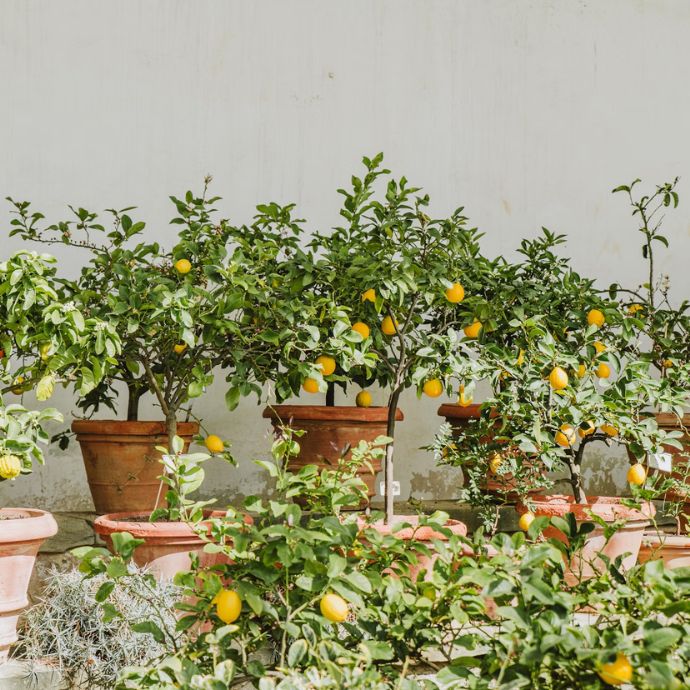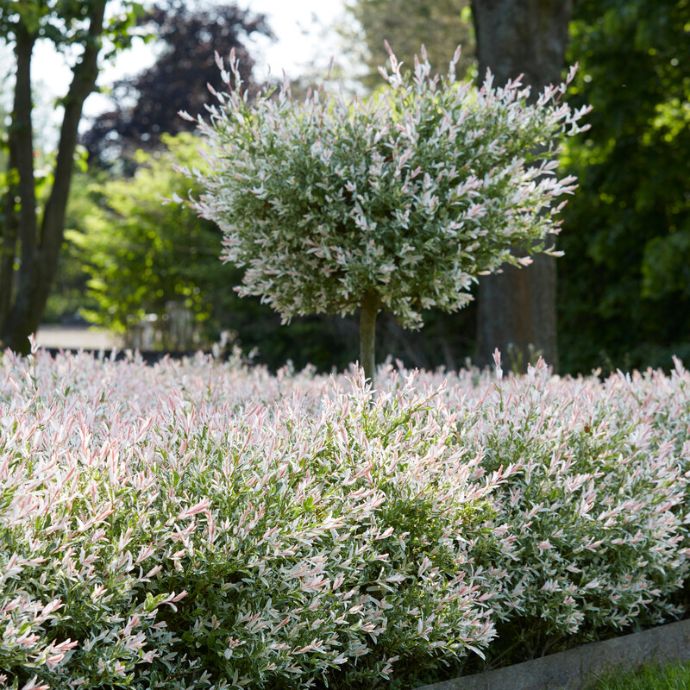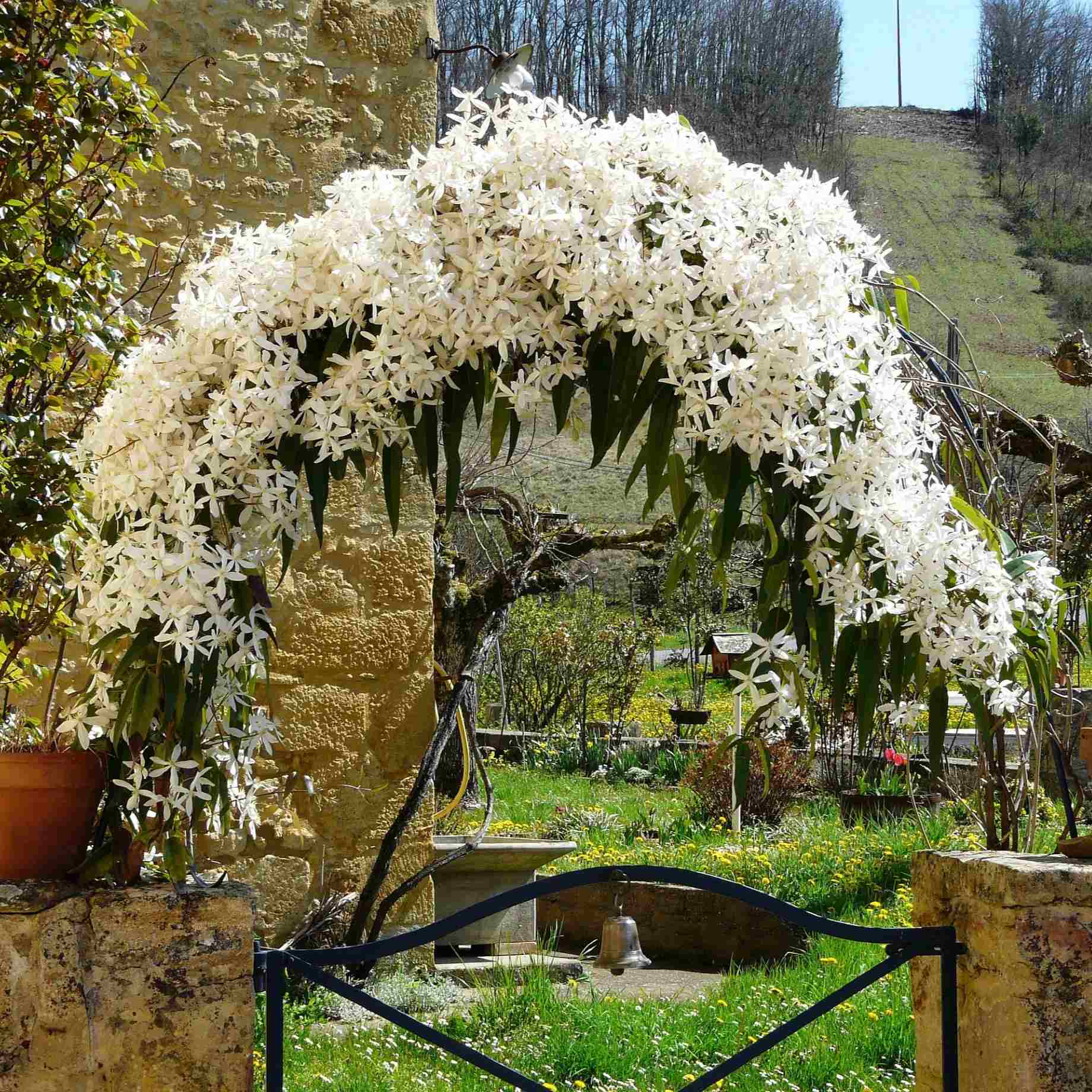Advice & Inspiration
Clematis Varieties: Which is the Best Clematis for Your Garden?

Is clematis the most versatile plant you can grow? It’s a strong contender! These colourful and resilient flowering climbers will grow almost anywhere - up a trellis, over a pergola, in a pot or across a wall. Which is good news for us, because it means that whatever kind of garden we have, there’s probably a clematis to go in it.
Don’t take my word for it - if I were in charge, you’d have to grow at least three clematis (clematises? Clematii?) by law. Luckily for you I’ve got some advice from our growers - they’ve got everything you need to know to pick the perfect clematis for you.
Jump to:
- Best clematis for a trellis
- Best clematis for an obelisk
- Best clematis for a pergola
- Best clematis to cover a wall or fence
- Easiest clematis to prune
- Best scented clematis
- Best clematis for flowers
- Best winter-flowering clematis
- Best clematis for pots
- Best clematis for shade
- Easiest clematis to grow
- The hardiest clematis
Best clematis for a trellis
A trellis is the ideal place to grow a clematis - for the best results, fix yours to a wall or fence which is sunny at the top and has some shade (from buildings or shrubs) at the bottom.
For this location you’re best off with a variety that grows fairly high but doesn’t spread too vigorously, so it’s easy to keep in shape.
Warsaw Nike is ideal at 3m height x 1m spread, or for a winter blooming alternative, Freckles (3-4m x 1m) has the looks, the scent and the perfect timing. For smaller trellises, look at Bernadine (1.2 x 0.7m) or Diamantina (2.5 x 1.5).
My personal favourite is the Clematis Piilu that grows on the trellis by my front door. Every summer it’s covered with flamboyant pink stripy blooms that make a very welcome sight whenever I come home.

Best clematis for an obelisk
Obelisks are a stylish way of supporting climbing plants - the taller ones can go in a border to add height in your displays, or you can use a smaller obelisk in a pot, which is handy if you’re renting as you can take it with you if you move. Whichever size you use, you can make a real feature of it.
Some good compact clematis for small obelisks are Aljonushka (just 50cm high) and blue flowered Arabella (1.8m max height) whereas for taller obelisks of 1.5-2m, you can go a bit larger with a striking clematis like Innocent Glance or deep purple Romantika.
I really love the use of obelisks in the white garden at Newby Hall - they help to create variation amongst plants of the same colour, drawing attention to each one on a different level. Early Sensation, Snowdrift and Cartmanii Joe are white clematis that are perfect for obelisks, and you won’t have to worry about leaving access, because they’re group 1 clematis which don’t need pruning. You can mix and match climbers of the same colour, too.

Best clematis for a pergola
In terms of a clematis to drape itself over a pergola or garden arch, what you want is something really vigorous that’ll provide a lot of coverage, fast growing (no one loves a bare pergola, so the quicker the better) as well as hardy so it can withstand the winds in its high-up position.
Award-winning Ernest Markham is ideal, at a height of 3.5m and a spread of 1m. It’s fast growing and flowers prolifically, with masses of velvety magenta blooms on fresh green foliage.
Other good choices for pergolas are Andromeda (hot pink striped flowers growing to 3 x 1.5m) and Blue Angel, (3m x 1m) whose frilled lilac-blue flowers appear luminescent at sunset.
For year round pergola coverage, you could also team it with an evergreen variety like one of the cirrhosa or armandii clematis - or even pair it with an evergreen jasmine.

Best clematis to cover a wall or fence
When it comes to covering a wall or fence in flowers and greenery, you need a fast growing, wide spreading clematis with lots of flowers. Etoile Violette, with its dense foliage (growing to 5m high), profuse flowering and head-turning deep violet flowers, fits the bill.
In fact, any Group 3 clematis will cover a wall or fence well, as they’re so vigorous and covered in flowers from July to September or even beyond - we love burgundy red Rouge Cardinal, white Prince George (great for brightening up a dark, dingy fence) and the lilac-pink Hagley Hybrid.
As above, planting an evergreen variety alongside your summer flowering clematis will keep your wall or fence looking good all year round.

Easiest clematis to prune
The secret to easier clematis pruning, whatever variety you have, is to know the pruning group. Once you’ve found this out, just follow our easy guide to find out when and how much to prune.
Even easier, just choose a Group 1 clematis (these include alpina, montana, cirrhosa and armandii varieties) and you won’t have to prune it at all.

Best scented clematis
All clematis have a slight scent, but for most, the flowers are the main attraction. Some varieties do have a more pronounced fragrance, so if you love to stop and smell the flowers, your best choices are flammula, armandii, x triternata, x aromatica, cirrhosa or montana clematis.
Clematis x aromatica is the most fragrant of all, with an orange and vanilla scent, while armandii, triternata and montana clematis flowers all have scents with almond and vanilla notes. Montana Elizabeth and Rubens are especially good. My favourite scented clematis is the winter flowering cirrhosa Jingle Bells, which has a fresh citrus perfume that becomes stronger as the flowers mature.
Scented clematis make good choices for locations like a patio seating area, an arch over a garden path or by a window or door, where you can appreciate the perfume while you’re relaxing or passing by.
For a real wow factor, you need big, showy flowers and plenty of them - take a look at the feathery lilac pompoms of Josephine or Diamantina’s double blue blooms, up to 15cm across. These seriously impressive flowers will keep on coming from June to September.
For maximum flowers, how about a group 2 clematis? These varieties are covered in large flowers throughout May and June, then produce another flush in September. Our favourites are The Vagabond (for huge, velvety indigo flowers), Crystal Fountain (with its amazing ruff of stamens) and Samaritan Jo, which produces masses of blue-lilac flowers edged in deep purple.
For more spectacular blooms, check out our grower Mollie’s collection of her favourite clematis flowers.

Best winter-flowering clematis
If you really love your clematis, there’s no reason to do without them when summer ends. Cirrhosa clematis like Wisley Cream and Freckles and clearkeana varieties such as Winter Beauty flower from December to February.
My favourite winter-flowering clematis is Clematis napaulensis (Nepal Clematis), which flowers from November right up to March and has bell-shaped, fragrant cream flowers with prominent red-purple anthers.
If you plant this with an early-flowering variety like armandii Appleblossom, which blooms in spring, and a viticella (which flowers well into autumn) you can enjoy clematis flowers all year round.

Best clematis for pots
You can grow most clematis in pots provided they have a support to climb up, but some are more suitable than others. It’s best to choose one which doesn’t grow too large, such as repeat flowering Bees Jubilee - which grows to a very manageable 1m tall, or pink Aljonushka and blue flowered Bijou, both at a miniature sized 50cm.
Bear in mind that if your favourite is a more vigorous variety, you can always keep it smaller with pruning. The best pot for your clematis is one that’s made of frostproof terracotta, which will keep your plant’s roots nice and cool, just the way it likes them! Our clematis grower, Mollie, has more advice about growing in pots.

Best clematis for shade
The ideal position for clematis is a place where they have their roots in shade (for example in a woodland border) and can get full sun at the top. For example, I have a Rouge Cardinal growing on a fence next to an acer tree so that the lower part of it is shaded by the tree’s foliage and the top, which is taller than the tree, can get plenty of light.
In aesthetic terms, a white or pale pink clematis always looks lovely in a shaded spot, as the light coloured flowers stand out more - Clematis Marie Boisselot is a good example.
Most clematis varieties do flower much better when grown in full sun, but there are some which are quite happy with a bit of light shade, especially if this falls during the afternoon. Do check when you’re choosing - we’ve included this info on our clematis pages.
Some of the best shade-tolerant clematis varieties include Nelly Moser, The President, Hagley Hybrid and Multi Blue, all of which are large flowered hybrids which certainly don’t compromise on spectacle.

Easiest clematis to grow
Clematis are generally quite easy-going plants with low maintenance needs; even lower if you choose a group 1 variety that doesn’t need pruning, like one of these. Probably the best choice for beginners or for gardens with less than ideal growing conditions though, is any viticella clematis. These are some of the most resilient and easy-going varieties, and they’ll put up with poorer soil and worse weather than most.
My favourite is the deep violet Polish Spirit, but Madame Julia Correvon and Etoile Violette are also good choices. These are group 3 and do need pruning in early spring, but if you follow our pruning guide, you won’t go wrong. Even if you do go a bit overboard, viticellas are so vigorous that they’ll easily grow back.

The hardiest clematis
Clematis are generally pretty hardy plants, so none of them will faint at the sight of sap to be honest. I mentioned above that viticella varieties are very resilient, but alpina clematis like Willy and Bredon Blue are also tough as nails.
These are deceptively delicate looking, with nodding, bell shaped flowers, but trust me - they originate from cold alpine regions and can stand up to a lot of punishment. They do need to be in well drained soil so their roots don’t get soggy, and watered well in hot weather, but apart from this they’re pretty low maintenance.
As the name suggests, montana clematis originate from mountainous regions, so they’re very cold hardy too. At H5-6, they’ll have no issues with anything the UK weather can throw at them. The best clematis montana varieties include Montana Mayleen and Montana Wilsonii (white), and as they’re group 1 varieties, they won’t need pruning either.
Check out our advice and inspiration pages for more climbing plant tips.


















